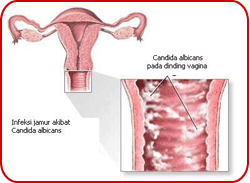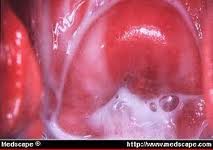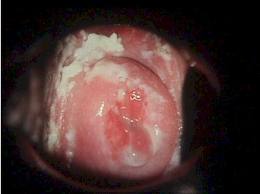
What is white discharge problem?
White discharge also known as vaginal secretion of white, cream or grey colour fluid from the vaginal area has became an universal problem for women all over the world. Statistic shows that around 75% of infected women are married and sexually active. Many women have no awareness of the risks and dangers of white discharge and even consider it as an indication prevailing before the menstrual cycle. Therefore, it is important for all women to have at least the basic knowledge which distinguishes the production of natural vaginal mucus with white disease which is more complicated and requires medical treatment.
Types of white discharge
White discharge is divided into two types, namely physiological white discharge and pathological white discharge. Physiological white discharge is usually normal and do not show symptoms of the disease. Physiological white discharge often occurs during woman fertility and before menstruation (periods). Discharge that comes out of the vagina is usually white or cream and odourless and does not cause itchiness in the vaginal area. The amount of the discharge is little and in the liquid form. However, pathological vaginal discharge tend to be more chronic with signs of the disease such as secretion of thick, yellow, grey or green colour mucus with foul odors and often cause irritation in the vagina.
Physiological white discharge is a very normal sign where almost every woman will go through this situation. While, pathological white discharge, caused by infection (bacterial and / or fungal) needs to be treated. Table 1.0 shows the difference between these two types of white discharge.
|
Characteristic
|
Physiological white discharge
|
Pathological vaginal discharge
|
|---|---|---|
| Shape | Non-stick liquid secretion | Sticky and thick mucus secretion |
| Colour | White or cream | Yellow, Grey or Green |
| Smell | No smell | Foul smell |
| Amount | A little | A lot |
| Frequency | During the pre-fertile and menstruation | When an infection occur (bacteria / fungal) |
| Other Signs | No | Vaginal itching and visible redness and inflammation of the vagina |
| Treatment | Not required | Required urgently |
Table 1.0 The differences of Characteristic physiological and pathological white discharge
|
Figure: 1.0
Vagina looks reddish and inflamed |
Figure :2.0
Thick and sticky mucus secretion |
Figure 1.0 and 2.0 shows the vagina of women who have been infected by the germs with abnormal discharge
What are the factors that contribute to white discharge?
- Cleanliness Factor
Hygiene of women private parts (vagina) should be taken care well to avoid infection.
Women are always encouraged to wash her private part with clean water and keep it dry after urination process and sexual activity. Moist environment in the vagina will influence to the growth of microorganisms pathogen such as bacteria or fungus.
- Hormone Factor
Disturbance in hormonal balance in the body can also cause white discharge problem in women. Hormonal imbalance in the blood can be caused by several things as listed below:
- Secretion of the female reproductive hormone estrogen in pregnant women allows fungi to be more easily attached to the vaginal wall.
- Consumption of medicines, especially antibiotics in excessive amount for a long term may kill off the normal flora of the vagina indirectly contributing to the growth of microbial pathogens.
- Wanita yang mengalami tekanan akibat daripada masalah peribadi atau gangguan emosi yang lain akan mempengaruhi aktiviti normal otak dalam mengkordinasikan penghasilan hormon yang seimbang.
- Women who experienced stress as a result of personal problems or other emotional disorders affects the normal activity of the brain in coordinating the production of hormones.
- Taking contraceptive pills can also contributed to the imbalance of hormones in the blood.
- Life Style Factor
A woman’s lifestyle greatly affects her health status. Women who are active in unhealthy sexual activity, such as promiscuous sex with more than one partner are more likely to get a variety of infections in the vagina.
- Health Factor
Women who have diabetes are more susceptible to get white discharge due to the high sugar content in vaginal secretion which allows the growth of yeast (fungus) in the vagina. In addition, an immune-compromised or immune-suppressed person such as patient who is suffering from AIDS or cancer such as leukaemia also faces a high risk of getting a vaginal infection due to their low defence power.
Interaction of Microorganism in white discharge disease
A woman’s vagina area is filled a variety of bacteria known as normal flora. The most useful bacteria among the normal flora in the vagina are called Lactobacillus. Lactobacilli are the main source of lactic acid, which keeps the PH at vagina area in acidic environment around 3.5 to 4.6. This acidic environment prevents the vaginal area from infection.
Infection will occur when the function of the normal flora disturbed by external factors, such as the use of unsuitable feminine wash products which change the acidic environment and consequently kill off the normal flora. This situation leads to the overgrowth of other commensal organisms until the infection occurs.
|
Causative agents
|
Type of germs (Microorganism)
|
Clinical characteristic
|
Source of Infection
|
|---|---|---|---|
| Gardnerella vaginalis | Bacteria |
|
|
| Trichomonas vaginalis | Parasite |
|
|
| Candida albicans / spp | Yeast |
|
|
Table 2.0 White Disease-causing Agents

Figure 3.0 shows a picture of fungal infection in the vagina is known as Candida albicans.
Risk of white discharge in women
If the problem is not treated properly this will lead to a variety of dangerous complications Delayed treatment not only potential to cause infertility and ectopic pregnancy, but also can lead to cervical cancer, the disease that usually causes death. White discharge disease which has been left longer, will be more difficult to treat as the germs such as bacteria or fungi starts developing their resistance against antibiotics or antifungal drugs.
In a chronic vaginal discharge, infections that occur in the cavity will spread to the womb (uterus) and then to fallopian tubes. This may contribute to the formation of ectopic pregnancy and lead to bleeding that may result in the death of both mother and fetus.
In women who have suppressed immune system, a typical white discharge can become a life-threatening disease. The infection that begins in the vagina can cause secondary infection in which the germ could enter the blood vessels as a result of scratching activity and the formation of lesions. These symptoms are known as invasive candidiasis which is very dangerous and require an intensive care.
Prevention of white discharge problem
Prevention is always better than cure. Knowledge and awareness of the ways to tackle the disease are very important to women in order to practice a healthy and safe lifestyle. As a preventive measure against white discharge disease, below are some tips recommended to all women:
- Always make sure the vagina is clean and dry. Avoid using cleansing agents that disrupt vaginal pH stability or cause irritation.
- Keep changing or replacing the sanitary pad regularly during menstrual.
- Use a panty liner only when necessary. Also avoid wearing tight underwear and made of satin material.
- Do not use any deodorization products such as powder or spray in the vaginal area.
- Avoid taking any medication excessively without consulting your doctor.
- Reduce the intake of foods with high sugar content.
- Maintain a healthy lifestyle. Avoid promiscuous sexual activity or intercourse with more than one sex partner.
- Avoid the presence of a foreign body in the vagina like a condom left in after sexual activity.
- Wash private parts with clean water and urinate after sexual activity.
- Consult a medical officer immediately and perform a vaginal examination if there are any signs as above are observed.
- Perform any activity that calms the mind and reduces stress such as traveling or going on vacation.
Conclusion
White discharge is a classic problem that has been encountered by all women in their life time. However, the symptoms and complications of the disease may differ on individual based on their health status. A physiological type of vaginal discharge that is often seen in healthy women is considered normal and will recover by its own. In contrast, pathological vaginal discharge is classified as a disease that is more complicated and needs to be treated immediately. Pathological symptoms of vaginal discharge are caused by various factors including issues of personal hygiene, the stability of the hormone in the blood, health factors and lifestyle factors.
Microorganisms whether bacteria or parasite or fungi are the main agents involved in vaginal infection in which the clinical features seen in patients varies according to the type of infection. However, all types of infections potentially lead to more chronic diseases such as uterus cancer if taken lightly. Women who are pregnant have a higher risk of getting the disease due to high reproductive hormone secretion in the body.
Most women do not have a proper awareness of the white discharge problem as they consider it to be a common phenomenon in everyday life. Many women may regret it later when they face an unpleasant incident as a result of infection. It is important for the women to always maintain a healthy lifestyle and free from vaginal infections for a happy life.
References:
- https://www.google.com.my/search?q=penyakit+keputihan+wanita&tbm=isch&tbo=u&source=univ&sa=X&ei=5ADDUerYBILprAffnIHoDA&ved=0CCkQsAQ&biw=1024&bih=624
- Penyebab Keputihan Pada Wanita http://bidanku.com/index.php?/keputihan-pada-wanita-jenis-penyebab-dan-penvegahan#ixzz2VzknY1Zm
- https://www.nlm.nih.gov/medlineplus/ency/article/001511.htm
- https://www.cdc.gov/nczved/divisions/dfbmd/diseases/candidiasis
- Arnold E., 1995. Gynaecology by Ten Teachers. ed. Chamberlain G., pp 80-83. Great Britain.: The Educational Low-Priced Books Scheme.
- Mandell G.L., Dolin R., Bennett J.E. 2010. Principles and Practice of Infectious Diseases. 17th Ed. pp 1495-1505. United States.Churchill Livingstone Elsevier.
| Last Reviewed | : | 13 January 2014 |
| Writer | : | Stella a/p Ganapathy Pillay |
| Accreditor | : | Rusmah bt. Yusof |









